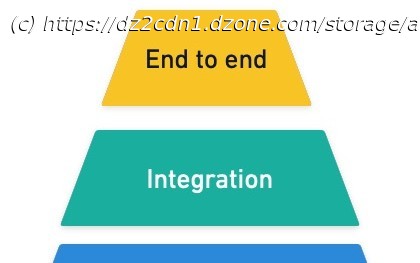Explore different ways of organizing the test suite, including the testing pyramid, testing matrix, and testing trophy. Why is the test pyramid still relevant?
The pyramid attempts to visually represent a logical organization of testing standards. It consists of three distinct layers: As you can see, the three types of tests have very different scopes: To understand how the pyramid got its shape, we must understand the intricacies of each type of test. Unit tests are small and therefore easy to write and maintain. Because they test very narrow parts of the code, we need plenty of them. This is usually not a problem because unit tests are light enough that we can run thousands of them in a few seconds. E2E tests are at the far end of the spectrum. They are complex to write, difficult to maintain, need plenty of resources, and are slow to run. But, since we can cover a lot of the application with a few E2E tests, we need fewer of them. In the middle, we find integration tests. Complexity-wise, they are on the same page as unit tests. But we don’t need as many of them since we are only interested in testing the “edges” of the application. Compared with unit tests, integration tests need more resources to run but are the same order of magnitude. Hopefully, you now understand why the pyramid has its shape: the width of each layer represents the ideal relative quantity for each kind of test. In other words, the pyramid says we must have a few end-to-end tests, a decent amount of integration tests, and a swarm of unit tests. As you work up the pyramid, tests get more complex and cover a more significant portion of the codebase. At the same time, the effort of writing, running and maintaining them increases. The pyramid illustrates an ideal ratio that maximizes the chance of finding a bug with the least work. The nature of software development can often make the pyramid appear spontaneously — even when developers didn’t consciously set out to do it. Why does this happen? It’s challenging to write E2E tests when the project is just starting. Unless the development team adopts a framework such as BDD and sets out to write acceptance tests from the beginning, most E2E tests will be written only when a basic prototype or a minimum viable product is in place. By then, developers will have had plenty of opportunities to write unit and integration tests. A second factor that shapes the pyramid is speed.






